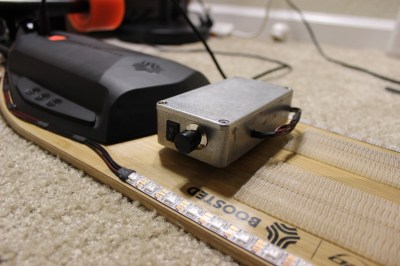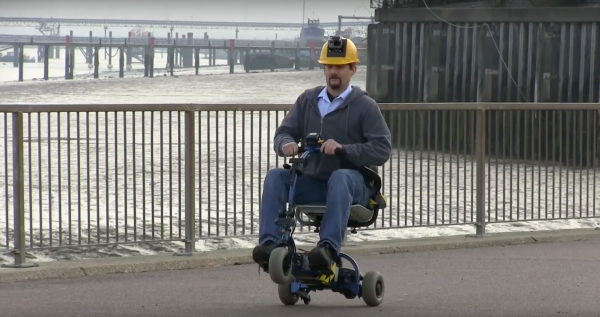Long-time Hackaday reader [Andrew Rossignol] bought a Boosted-brand electric skateboard while he was living in NYC. While the batteries more than sufficed for his commute in the Big Apple, he ran out of juice when he moved to the Left Coast, leaving him three miles short of a ten mile trip.
Faced with the unthinkable fate of pushing his skateboard like a Neanderthal, [Andrew] added more batteries. There’s great detail about how he chose the battery chemistry and the particulars of charging and something about load balancing, so it’s definitely worth a read if you’re building an electric vehicle.
 But once [Andrew] had some surplus battery capacity on board (tee hee!) he thought of ways to waste it. The natural solution: tons of RGB LED underlighting.
But once [Andrew] had some surplus battery capacity on board (tee hee!) he thought of ways to waste it. The natural solution: tons of RGB LED underlighting.
Still not content with an off-the-shelf solution (which wouldn’t let him recharge the batteries without unplugging the lights), he ended up rolling his own with an Arduino and some WS2812s. The nicest touch? Keeping it all out of the elements in a sweet aluminum box, hiding the cable salad within.
There’s a lot to be said for the good industrial design of something like the Boosted skateboard, but if you’d rather DIY, we’ve been covering electric skateboard for a while now. It’s nice to see how battery and motor technology have changed since then, too. Compare and contrast this recent build with that old-school version and with [Andrew’s] build that was covered in this post. We live in good times.








 on between the wood and the outside wall ensured the van would stay nice and toasty. [Joe] put in some pre-finished flooring and added benches to cover the wheel wells. The benches hide storage for wood, and the wiring for the van’s sound system. Speaking of which, your sweaty friends won’t be happy without some tunes so [Joe] added speakers and a radio. Check out the video after the break to see it all in action. This thing is just
on between the wood and the outside wall ensured the van would stay nice and toasty. [Joe] put in some pre-finished flooring and added benches to cover the wheel wells. The benches hide storage for wood, and the wiring for the van’s sound system. Speaking of which, your sweaty friends won’t be happy without some tunes so [Joe] added speakers and a radio. Check out the video after the break to see it all in action. This thing is just 









